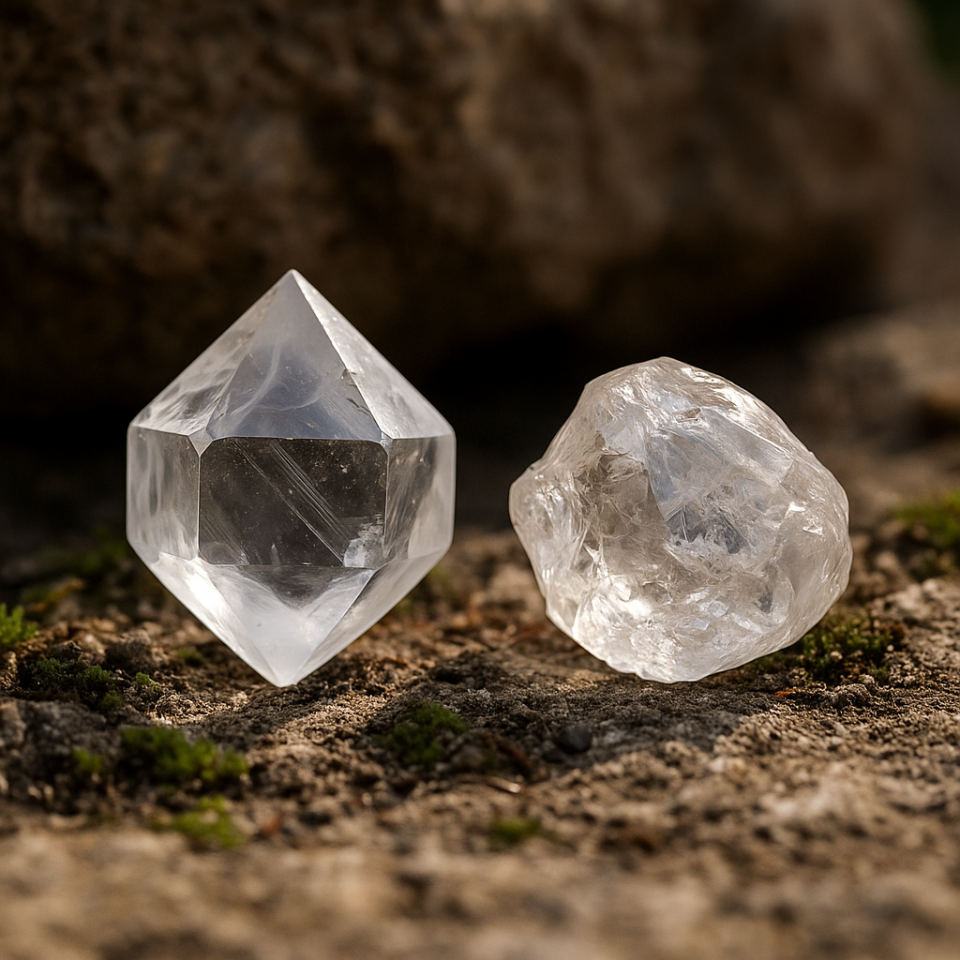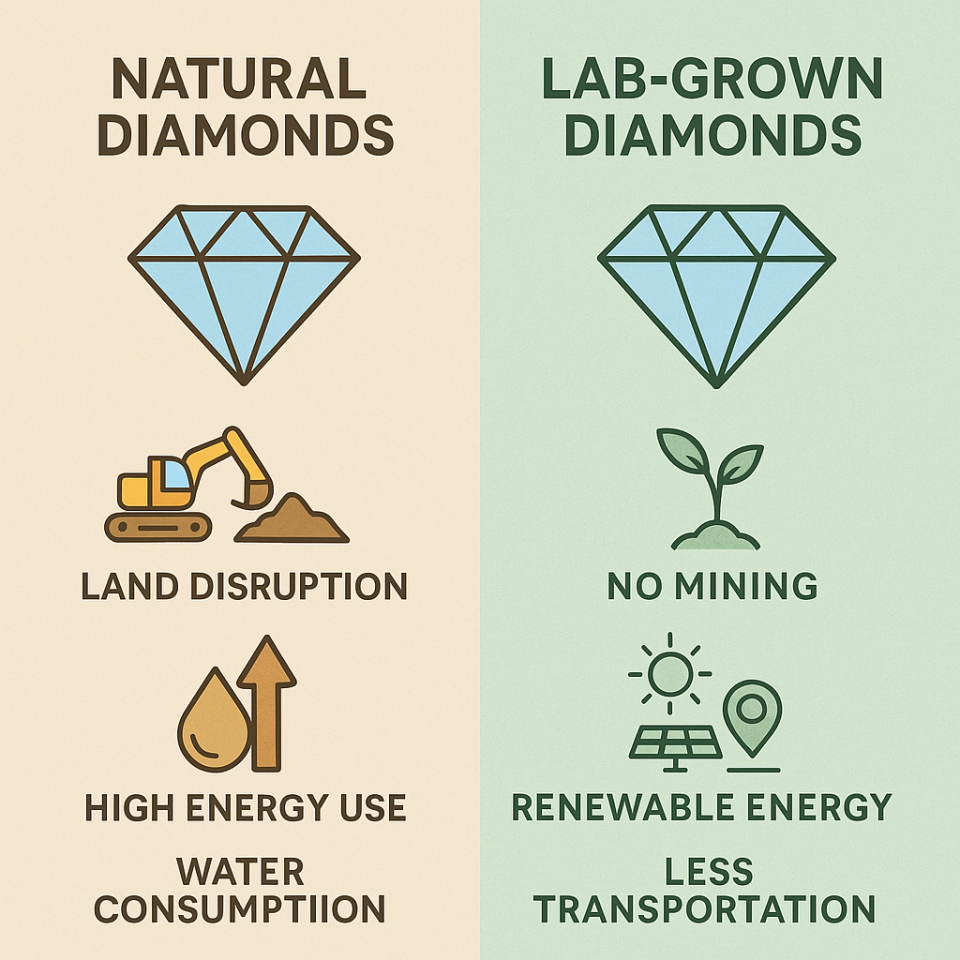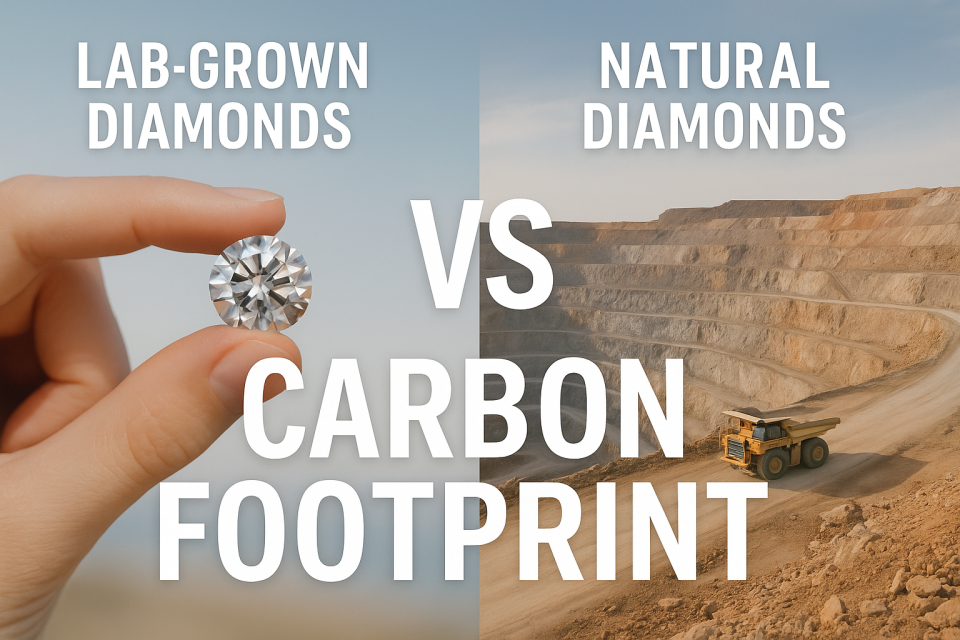Introduction
Diamonds have long symbolized love and luxury, but in today’s environmentally conscious world, consumers are asking a new question: What’s the environmental cost of diamonds? With the rise of lab-grown diamonds, sustainability is at the forefront of the jewelry industry.
This article examines the carbon footprint of lab-grown diamonds compared to natural diamonds, helping you understand their environmental impacts and make informed, values-driven choices.
Why Carbon Footprint Matters in the Diamond Industry
The carbon footprint measures the total greenhouse gas emissions produced throughout a product’s lifecycle, from raw material extraction to final delivery. For diamonds, this includes:
- Mining or manufacturing
- Energy use during cutting and polishing
- Transportation and distribution
Given the diamond industry’s historical reliance on resource-intensive mining, understanding carbon emissions is critical for consumers seeking sustainable jewelry.

Natural Diamond Mining and Its Environmental Impact
Natural diamonds form deep within the Earth, taking billions of years to develop. Extracting them requires heavy machinery, blasting, and massive infrastructure.
Key Environmental Factors of Natural Diamonds:
- Land Disruption: Mining often involves removing tons of earth, resulting in habitat destruction and soil erosion.
- Energy Use: Mining operations use large amounts of fossil fuels, generating significant CO₂ emissions.
- Water Consumption: Diamond mining consumes substantial water resources, impacting surrounding ecosystems.
- Transportation: Mined diamonds are often transported globally before reaching cutting and polishing centers, adding to emissions.
Carbon Footprint Estimates:
According to independent studies, producing one carat of a natural diamond can generate 500–1,000 kg of CO₂ emissions, depending on mining methods and geographic location.
Lab-Grown Diamonds and Their Environmental Impact
Lab-grown diamonds are created in controlled environments using two main methods: HPHT (High Pressure, High Temperature) and CVD (Chemical Vapor Deposition).
Key Environmental Advantages:
- No Mining: Eliminates the need for large-scale earth excavation, preserving ecosystems and reducing soil and water impacts.
- Energy Efficiency: While still energy-intensive, many labs now use renewable energy sources, significantly lowering emissions.
- Localized Production: Many lab-grown diamonds are produced closer to jewelry manufacturing hubs, reducing transportation-related emissions.
Carbon Footprint Estimates:
Modern studies indicate that lab-grown diamonds can have up to 60–70% lower carbon emissions compared to mined diamonds. For example, a one-carat lab-grown diamond may generate 150–250 kg of CO₂, depending on the energy source used.

Energy Sources: A Critical Factor
One crucial detail is the energy source powering diamond production:
- Fossil Fuel-Based Labs: A lab using coal-based electricity may reduce only part of the carbon impact.
- Renewable Energy Labs: Labs running on solar, wind, or hydroelectric power drastically cut emissions, sometimes nearing carbon neutrality.
Beyond Carbon: Other Sustainability Factors
While carbon footprint is important, sustainability encompasses other factors too:
- Human Rights: Lab-grown diamonds avoid concerns related to conflict diamonds or unsafe mining conditions.
- Water Usage: Lab-grown production generally requires significantly less water.
- Land Impact: No open-pit mining means ecosystems remain intact.
Are Lab-Grown Diamonds Always More Sustainable?
While lab-grown diamonds generally have a lower carbon footprint, there are nuances:
- Older production facilities may not use renewable energy.
- Smaller natural diamonds mined as byproducts can have a lower relative footprint than expected.
- Certification and transparency are key to ensuring sustainability claims are credible.
How Consumers Can Make Eco-Friendly Choices
- Look for Certification: Choose lab-grown diamonds certified as carbon neutral or sustainably produced.
- Ask About Energy Sources: Brands using renewable energy have significantly lower footprints.
- Consider Lifecycle Impact: From jewelry setting to packaging, every step matters.
Conclusion
The diamond industry is evolving, with lab-grown diamonds offering a more sustainable, lower-carbon alternative to traditional mining. While no product is entirely without environmental impact, consumers can make a meaningful difference by choosing lab-grown diamonds from brands committed to renewable energy and transparent practices.
Ready to explore sustainable jewelry?
Browse our Lab-Grown Diamond Jewelry Collection and make an eco-conscious choice without compromising on beauty.

